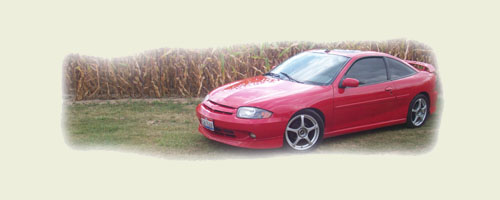twiztidhybrid wrote:Why is there so much argument over specifics that have many variables from different situations?
Wow, the phrase "the answer is in the question" sure fits this one perfectly...
twiztidhybrid wrote:Why is it being argued that a bullet fired up can't kill anyone when there are definitely cases where it actually happened?
Welcome to the JBO war forum(R). Home of the brightest minds in the universe(TM). However, I might suggest you read the first few posts of the thread at least.
twiztidhybrid wrote:Why have people physics teachers not told their students that the conditions went over in a general Physics class are under ideal conditions in order to give a general idea of how to derive information?
They were probably too busy bitching your English teachers out after trying to translate your papers

It's been mentioned a few times so far how those situations can not be applied directly to these. If someone would like to have a more detailed discussion, I'd certainly oblige. However, judging by the responses I've received so far, that's certainly not going to happen...
KevinP (Stabby McShankyou) wrote:you're trying to obfuscate common sense with high school physics.
You appear to frequent at least these online message boards, so you should be familiar with how sensible "common sense" actually is. I'm trying to present information at a basic level for those who can't comprehend anything more detailed. Judging by your arguments thus far, even this has been too much.
KevinP (Stabby McShankyou) wrote:falling bullets kill as many people as hail of the same weight...you know...none...hail of the same mass, weight, size, or density is not even enough to dent aircraft aluminum...something that is weaker than your skull bones.
SO MUCH FACEPALM ACTION HERE, that I don't know where to start. I guess I should first point out that the density of a bullet is more than 10x that of a piece of hail.
So, to your first statement I point out that the hail would have to be more than 10x the size of the bullet to be of the same weight. This leads to complications regarding it's terminal velocity AND localized impact force because of its size disadvantage. Let's not forget about the large disparity in molecular bonding forces between metallic elements and, well--ice.
To the second (kind of, hard to tell) statement:
To be of the same mass, well, we've covered that just now.
To be of the same weight, well, I'm afraid to point this out for fear of the recently prevalent "BASIC PHYSICS PRINCIPLES AAARRGGHHH!!!!" argumet, but in this case weight = mass * gravity, soooo... hopefully certain people here can figure that one out on their own?
To be of the same size, well, we just covered that indirectly with the density situation.
To be of the same density, well, you'd have to have a slug of ice, or hail of lead. Let's just go with "that's impossible, please stop talking out of your ass"...
As far as comparing skull bones to aircraft aluminum:
1) Aircraft are made from numerous different aluminum alloys, covering a wide spectrum of physical properties. As such, your generalization makes this hard to refute, but at the same time hard to prove.
2) Using the terms "dent" and "weaker" interchangeably is, in itself, a flawed argument. Strength and hardness of a material are not directly correlated when analyzing material properties. For instance, a plastic grocery bag is VERY "strong", but certainly not "hard". An object could very easily dent a typical aluminum sheet, but not dent a bone. However, an object could potentially penetrate a bone without penetrating a sheet of aluminum.
KevinP (Stabby McShankyou) wrote:in order for hail to even become close to fatal; it has to be around softball sized--larger, more dense, more heavy, and more massive than even aircraft projectiles.
See above.
KevinP (Stabby McShankyou) wrote:hail also falls further--has more time to potentially reach terminal velocity--than bullets do, because it's not everyday we see .223 punching holes through clouds...
Ai yai yai

How long do you think it takes either to reach terminal velocity? Seriously...
Might as well point out that hail, because of its low density, is severely affected by up-drafts which are pretty much constant in stormy conditions.
KevinP (Stabby McShankyou) wrote:use your god damn brains.
Ah, satire. It all makes sense now. 9.5/10

Stephen Colbert meets Bill Nye.
Oh yeah, you didn't answer any of my questions or requests for clarification. It's like talking to a wall... A very stubborn, somewhat coherent, and possibly mentally disadvantaged wall.
 fortune cookie say: better a delay than a disaster
fortune cookie say: better a delay than a disaster
























